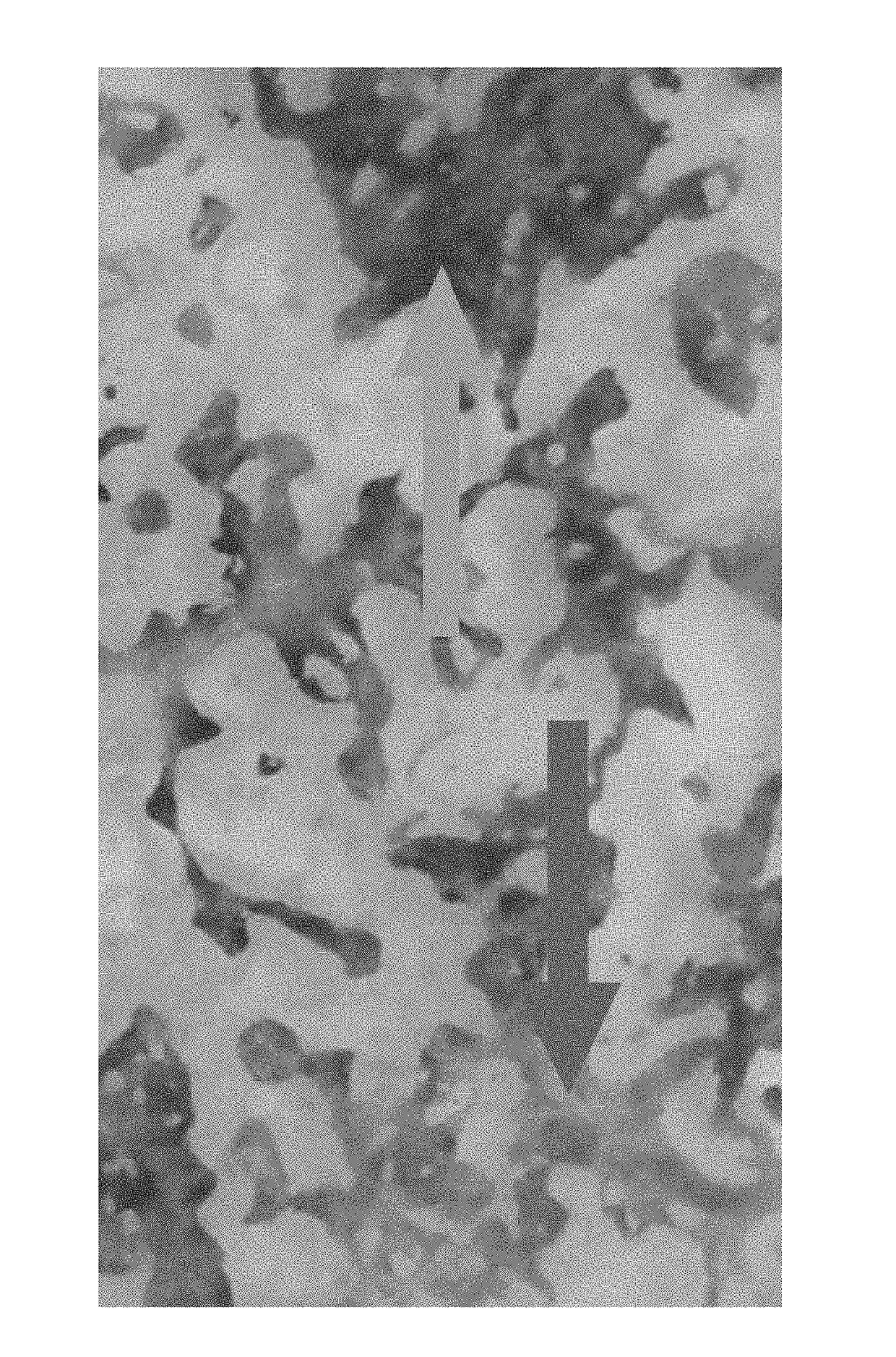Methods of culturing retinal pigmented epithelium cells, including xeno-free production, RPE enrichment, and cryopreservation
a retinal pigmented epithelium and cryopreservation technology, which is applied in the field of culturing retinal pigmented epithelium cells, including xeno-free production, cryopreservation, and cryopreservation, can solve the problems of amd, amd is a leading cause of vision loss in persons 60 years of age, and few therapies availabl
- Summary
- Abstract
- Description
- Claims
- Application Information
AI Technical Summary
Benefits of technology
Problems solved by technology
Method used
Image
Examples
example 1
Protocol for the Transition of Pluripotent Cells from Non-Xeno-Free Culture Conditions to Xeno-Free Culture Conditions
[0084]This exemplary protocol describes the transition of pluripotent human embryonic stem cells cultured (hESC's) under non-xeno conditions to fully xeno-free culture conditions. The starting materials are hESC's grown on MATRIGEL™ (BD Biosciences) (murine-derived protein mix) culture substrate, in MTESR-1™ (StemCell Technologies) growth media, which contains bovine-derived BSA. The xeno free media in this Example is X-VIVO 10™ and the xeno-free substrate is SYNTHEMAX™.
[0085]Pluripotent cells are transitioned into new medium and onto new substrate consecutively. In this protocol, cell survival and viability is enhanced by transitioning cells into xeno-free medium gradually, over a period of passages, which takes about 4 weeks.
[0086]All passages are performed by manual dissection. All culture media contain 50 μg / ml Normocin to minimize chance of contamination in long...
example 2
nd RPE Differentiation from Human Embryonic Stem Cells
[0097]This Example describes an exemplary protocol for the culture and differentiation of hESC's on SYNTHEMAX™, with X-VIVO 10™ media.
[0098]All passages of undifferentiated hESC are performed by manual dissection. Note that culture and differentiation media contain 50 μg / ml Normocin to minimize chance of contamination in long term experiments. Use of 100 μg / ml Normocin is not recommended for culture of undifferentiated hESC's because they exhibit increased cell death. A 6-well plate format is used for all culture procedures using a total volume of 4 ml medium per well. For aid in identifying differentiated vs. undifferentiated hESC colonies, reference to pages 5-7 of Human Stem Cell Manual A Laboratory Guide, Eds: Loring, J. F., Wesselschmidt, R. L., and Schwartz, P. H. (2007) may be made.
[0099]Undifferentiated hESC's are maintained on substrate-coated 6-well plates in X-VIVO 10™ medium containing 80 ng / ml human bFGF, 0.5 ng / ml T...
example 3
n of RPE Cells from Pluripotent Cells Under Xeno-Free Culture Conditions
[0104]Using methods based on the exemplary protocol described in Example 2, RPE cells were produced under xeno-free culture conditions. H9 human embryonic stem cells were plated in two wells of a standard six-well plate coated with SYNTHEMAX™. The H9 cells were cultured in X-VIVO 10™ medium supplemented with 80 ng / ml human bFGF+0.5 ng / ml TGFβ1. After two passages, six wells of undifferentiated H9 cells were present. When the cells reached 85-95% confluence, the growth medium was changed to X-VIVO 10™ without growth factors. Spontaneous differentiation of the plated cells commenced.
[0105]At 120 days after the initiation of differentiation, the wells contained darkly pigmented cells, with coverage of the darkly pigmented cells in the range of 15-60% of the substrate area. Darkly pigmented cells exhibited RPE physical morphology. Darkly pigmented cells were excised and assayed for markers of RPE phenotype, includin...
PUM
| Property | Measurement | Unit |
|---|---|---|
| concentration | aaaaa | aaaaa |
| concentration | aaaaa | aaaaa |
| concentration | aaaaa | aaaaa |
Abstract
Description
Claims
Application Information
 Login to View More
Login to View More - R&D
- Intellectual Property
- Life Sciences
- Materials
- Tech Scout
- Unparalleled Data Quality
- Higher Quality Content
- 60% Fewer Hallucinations
Browse by: Latest US Patents, China's latest patents, Technical Efficacy Thesaurus, Application Domain, Technology Topic, Popular Technical Reports.
© 2025 PatSnap. All rights reserved.Legal|Privacy policy|Modern Slavery Act Transparency Statement|Sitemap|About US| Contact US: help@patsnap.com

